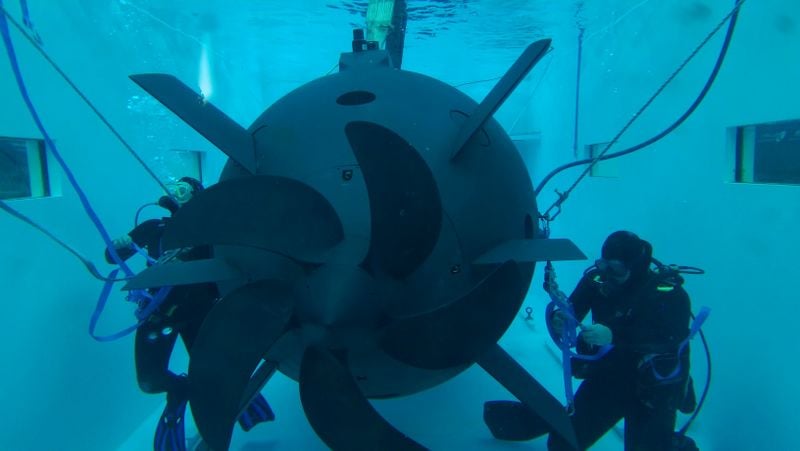
Huntington Ingalls Industries is preparing for a future where unmanned undersea vehicles are as integral to the Navy’s fleet as are capital ships, the company’s chief executive told analysts last week.
HII expects the Navy will soon request ships that look and function quite differently than the platforms it buys today, Mike Petters, HII’s chief executive, told analysts during a conference call discussing the company’s second-quarter financial results.
“The world is changing. The Navy is changing in response to that. And we are changing in response to the Navy,” Petters said.
For more than a half-century, perhaps no company has been as linked to the Navy’s largest platform – the nuclear-powered aircraft carrier – as HII, which has made all of them. However, technological improvements and new mission requirements mean the company needs to look far into the future for the platforms the Navy will need.
“Overall, we think unmanned space is going to fundamentally change the Navy going forward,” Petters said. “The intent to try to make ships more lethal, from the Navy standpoint, is something we’re paying closer attention to.”
In the future, it likely will not be practical to mass an armada of amphibious warships offshore and send in swarms of landing craft, wrote new Commandant of the Marine Corps Gen. David Berger in his “38th Commandant’s Intent” and “38th Commandant’s Planning Guidance” documents.
“We must accept the realities created by the proliferation of precision long-range fires, mines, and other smart-weapons, and seek innovative ways to overcome those threat capabilities. I encourage experimentation with lethal long-range unmanned systems capable of traveling 200 nautical miles, penetrating into the adversary enemy threat ring, and crossing the shoreline – causing the adversary to allocate resources to eliminate the threat, create dilemmas, and further create opportunities for fleet maneuver,” Berger wrote.
Petters said these are not “light-switch changes” that the Navy and Marine Corps are considering. The services need to evolve from “an operational concept perspective and then from a technology and platform perspective, and then all the way down to our training and recruiting perspective.”
The Marines, Petters said, are sending a clear message to industry that, looking “over the horizon, the way we’ve always done business may not be the way we need to do business in the future. And I think that’s true for everybody. And we are very actively engaged in trying to support that.”





